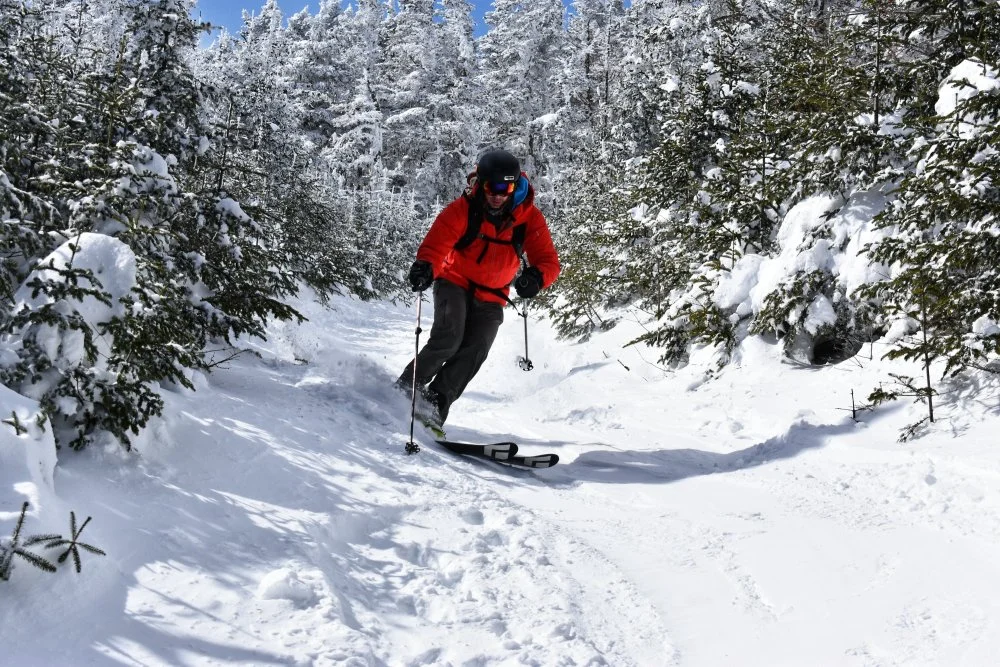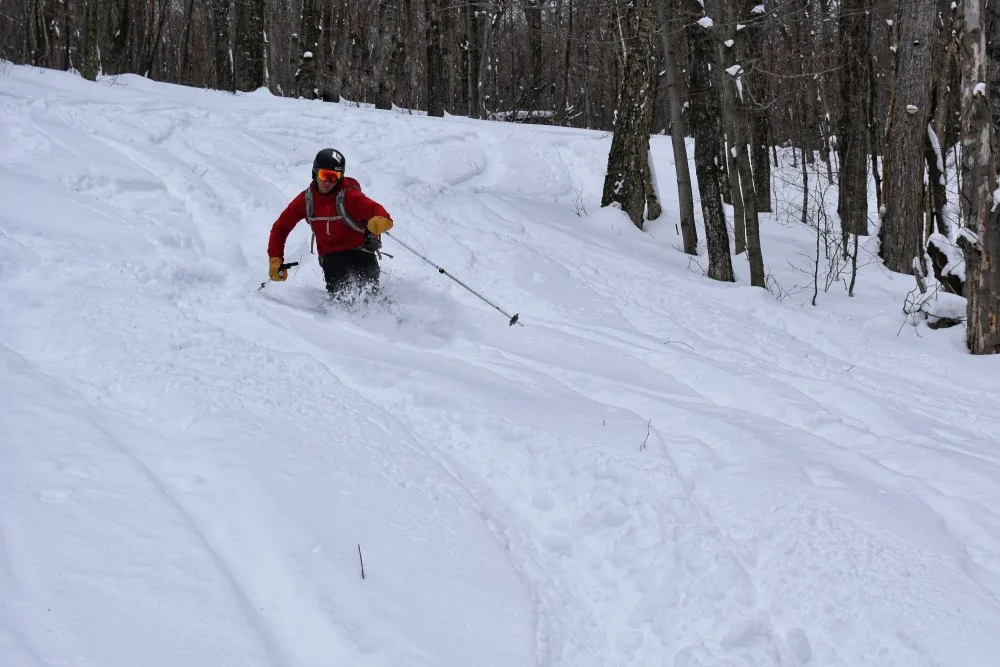First aid knowledge and training are the two most important pieces of gear that you can carry into the backcountry, a useful first aid kit is a close third.
All tagged backcountry skiing
Mount Moosilauke Ski Gear List
Moosilauke is often one of the first places that newer backcountry skiers visit. And, if they are like us, they will keep being drawn back by the more than five-mile long descent and above-treeline terrain. While there are plenty of places to get beta on the trip—like this article Tim wrote for goEast—we thought a detailed gear list would be an interesting, informative, and helpful companion. So here it is.
Skiing On Moose’s Carriage Road
Our ski day on Moosilauke was pretty special, but overshadowing the day is this whole month. “Miracle March” has given us one of the best ski months in recent memory and helped salvage an otherwise disappointing ski season.
Ski Season Comes Back to Cardigan
Although Cardigan isn’t the loftiest of goals, nor does it present the most challenging terrain, we found plenty of fresh snow, good turns, and managed to duck the crowds for most of the day. It even got me stoked on skiing again!
The Best and Worst of Ski Season
It was the best of times, it was the worst of times. After the start of a ski season that fluctuated somewhere between uneventful and blah thanks to an unseasonably warm stretch of weather, the snow finally arrived. However, with the snow also came record-low temperatures that tempered any enthusiasm for sliding on snow with biting cold.
Frigid Fun on Mount Tecumseh
Looking to break the cycle and to start the new year off by doing something active and outdoors—sorry, treadmill and climbing gym—I headed to Mount Tecumseh on New Year’s day with Doug, my wife, and the intention of skinning to the summit of a 4,000-footer and skiing down the adjacent Waterville Valley Resort.
Tips for Becoming a Skinning Star
When most people think of backcountry skiing, their minds turn to flying down a backcountry bowl or gliding through glades; but, the truth is, self-powered skiers spend far more time going uphill than down. To make the most of your time spent going uphill—and to hopefully spend a little less time doing so—follow these tips to become a skin track superstar.






